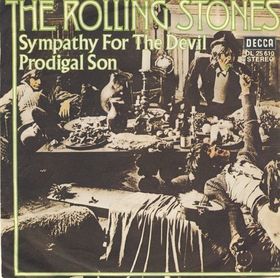Those who know me would probably confirm that my knowledge of French New Wave cinema is not exactly complete. In fact, what I don’t know about French New Wave cinema could probably fill a fair portion of Carnegie Hall. I’ve always been more of a Scorsese and Coppola guy when it comes to the silver screen.
I am however eternally grateful to a certain Jean-Luc Godard for one piece of his mid-sixties output, the highlights of which are captured above. Godard was on the scene when the Stones were recording their 1968 album Beggars Banquet and filming throughout.
Beggars Banquet has always been one of my favorite Stones albums. Maybe not quite up there with Let It Bleed in terms of overall consistency but it’s pretty damn close. In many ways, it was the first album where the Stones really hit their stride, where the whole perfect package finally came together over the course of a complete album.
There’s at least two all-time classics on there in Street Fighting Man and Sympathy For The Devil. Three if you count the single-only release of Jumping Jack Flash just prior to the album coming out. And the rest of the tracks more than hold up with low-key wonders like No Expectations hinting at some of the magic to come on later albums.

The German single version of Sympathy for the Devil
It’s the making of that second track I mentioned though that Godard managed to capture on film. I’ve heard some fairly mixed reports about One Plus One, the actual movie he was shooting. Like I said, Marxist New Wave has never been my bag. The cut-together version above tracking the development of the song is fascinating though.
For such an incredibly famous track, it’s amazing how different the early versions are. Check out Keith playing some mellow bass on the first couple of bluesy, almost country takes for example.
As the video unfolds though, you see the familiar song starting to take shape and those legendarily strange samba rhythms make an appearance around the halfway mark.
By the end we’re firmly into the stone-cold classic that was to become one of their greatest moments, complete with woo-woos.
It’s not often you get a behind the scenes glimpse of a masterpiece being created. We should all tip our hats to Monsieur Godard for getting the magic in the can.